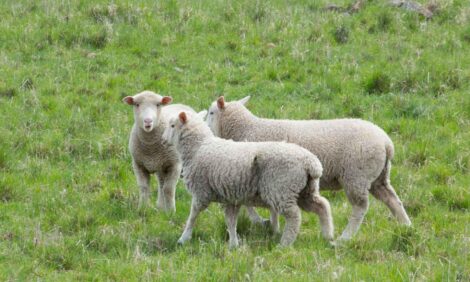



Horn Fly in Cattle: Risks and Control
Horn flies on cattle become an increasing problem at this time of year, and this article from Rachel Endecott at Montana State University Extension gives some tips on how to protect your herd.As we move into early summer, cattle producers may be noticing increased numbers of flies on their cattle.
Horn flies are very common on beef cattle in Montana and annual losses in production and control costs exceed $780 million in the US alone.
When horn flies are abundant, cattle experience pain and annoyance from fly bites, which interfere with normal activities such as grazing and resting. Cattle infested with horn flies may exhibit decreased milk production, reduced weight gain and poor feed efficiency.
Horn flies are external blood feeders and will bite an animal 20-30 times per fly per day. Depending on the infestation level, this can calculate into thousands of bites each day!
Horn flies spend the majority of their time on the animal, although females leave the animal to deposit eggs in fresh manure.
Horn flies show a preference for larger animals such as bulls, cows, and yearlings and tend not to bother calves until the end of the summer when calves have grown. For this reason, inserting insecticide ear tags into baby calves, rather than their dams, is not recommended, and in fact does little good.
Several studies have indicated that as few as 200 flies per animal results in reduced feed efficiency and lower weight gains.
Nebraska studies demonstrated calf weaning weights were 10 to 20 pounds higher when horn flies were controlled on cows. Similar weight gain results for replacement heifers and stocker cattle have also been observed.
Controlling Horn Flies
Control of horn flies is generally achieved through the use of insecticides, many of which are available to control horn flies on pastured cattle.
The most common of these include dust bags, back oilers, insecticidal ear tags, and feed additives.
Dust bags and back oilers work best in a forced-use situation, where animals are forced to walk under them to obtain water, feed, or mineral. These may not be feasible in extensive range situations.
Insecticide ear tags slowly release small quantities of insecticide over a period of weeks which travels through the hair coat of the animal.
Horn flies can develop resistance to insecticides used in the tags, so animal health companies have developed different insecticide chemistry to combat the resistance problem. Producers should avoid using ear tags in the same chemical class for two or more consecutive years.
Oral larvicides incorporated into mineral blocks, tubs or loose mineral are effective when consumed in sufficient quantities all season long.
The insecticide does not control adult flies, but is passed out in the manure and kills fly larvae as they are developing. However, adult horn fly numbers may appear unaffected if the cattle consuming feed additives are in close proximity to an untreated herd.
As always, it is important to carefully read and follow the insecticide label concerning the application of any insecticide to cattle and precautions concerning calves and lactating dairy cattle.


